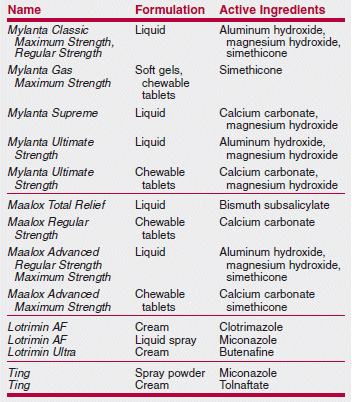Matching articles for "Calcium Carbonate"
Drugs for Postmenopausal Osteoporosis
The Medical Letter on Drugs and Therapeutics • November 1, 2011; (Issue 111)
Osteoporosis is characterized by low bone mass with
microarchitectural disruption and skeletal fragility that
results in an increased risk of fracture. The diagnosis
has traditionally been established by...
Osteoporosis is characterized by low bone mass with
microarchitectural disruption and skeletal fragility that
results in an increased risk of fracture. The diagnosis
has traditionally been established by bone densitometry,
which is generally reported in terms of standard
deviations (SD) from mean values in young adults (T-score). The World Health Organization (WHO) has
defined normal bone mineral density (BMD) for
women as a value within one SD of the young adult
mean. Values 2.5 SD or more below the mean (T score
-2.5) are defined as osteoporosis. The WHO has developed
a computerized model (FRAX) that predicts the
10-year probability of a hip fracture or any other
major osteoporotic fracture based on clinical risk factors
and BMD at the femoral neck.
In Brief: Only The Name Remains The Same
The Medical Letter on Drugs and Therapeutics • June 28, 2010; (Issue 1341)
A Medical Letter subscriber was surprised to discover that a new Citracal product contained not only calcium citrate, but also calcium carbonate. Citracal Plus Bone Density Builder actually contains more...
A Medical Letter subscriber was surprised to discover that a new Citracal product contained not only calcium citrate, but also calcium carbonate. Citracal Plus Bone Density Builder actually contains more calcium carbonate per tablet than calcium citrate (240 mg vs. 60 mg). Another Citracal product, Citracal Plus Heart Health, also contains more calcium carbonate than calcium citrate. Many clinicians prefer calcium citrate because it can be taken with or without food, while calcium carbonate must be taken with food for optimal absorption. Other familiar over-the-counter (OTC) names also contain some surprises among their ingredients, as shown in the table below.

>Many well-known brand-name OTC products no longer contain only or necessarily any of their original ingredients.
Download: U.S. English
Drugs for Postmenopausal Osteoporosis
The Medical Letter on Drugs and Therapeutics • October 1, 2008; (Issue 74)
Osteoporosis is characterized by low bone mass with microarchitectural disruption and skeletal fragility that results in an increased risk of fracture. The diagnosis has traditionally been established by bone...
Osteoporosis is characterized by low bone mass with microarchitectural disruption and skeletal fragility that results in an increased risk of fracture. The diagnosis has traditionally been established by bone densitometry, which is generally reported in terms of standard deviations (SD) from mean values in young adults (T score). The World Health Organization (WHO) has defined normal bone mineral density (BMD) for women as a value within one SD of the young adult mean. Values 2.5 SD (T score -2.5) or more below the mean are defined as osteoporosis. The WHO has developed a computerized model (FRAX) that predicts the 10-year probability of hip fracture based on clinical risk factors and BMD at the femoral neck.
Phosphate Binders
The Medical Letter on Drugs and Therapeutics • February 13, 2006; (Issue 1228)
Hyperphosphatemia in end-stage renal disease can lead to secondary hyperparathyroidism, renal osteodystrophy, metastatic calcification and cardiovascular mortality. addition to dietary restriction of phosphorus...
Hyperphosphatemia in end-stage renal disease can lead to secondary hyperparathyroidism, renal osteodystrophy, metastatic calcification and cardiovascular mortality. addition to dietary restriction of phosphorus and hemodialysis, drugs that bind phosphates in the gut are usually needed as well. Aluminum hydroxide is no longer recommended for long-term use because of concerns about its toxicity.
Drugs for Prevention and Treatment of Postmenopausal Osteoporosis
The Medical Letter on Drugs and Therapeutics • October 1, 2005; (Issue 38)
Many drugs are now marketed for treatment of postmenopausal osteoporosis, but questions remain about their...
Many drugs are now marketed for treatment of postmenopausal osteoporosis, but questions remain about their use.
Drugs for Prevention and Treatment of Postmenopausal Osteoporosis
The Medical Letter on Drugs and Therapeutics • November 1, 2002; (Issue 3)
Many drugs are now marketed for treatment of post-menopausal osteoporosis (PD Delmas, Lancet 2002; 359:2018). Prevention of this disorder has been complicated by the news that hormone replacement therapy (HRT),...
Many drugs are now marketed for treatment of post-menopausal osteoporosis (PD Delmas, Lancet 2002; 359:2018). Prevention of this disorder has been complicated by the news that hormone replacement therapy (HRT), which many women have been taking to prevent osteoporosis, increases the incidence of coronary heart disease and that of breast cancer, stroke and pulmonary embolism as well (Medical Letter 2002; 44:78).
